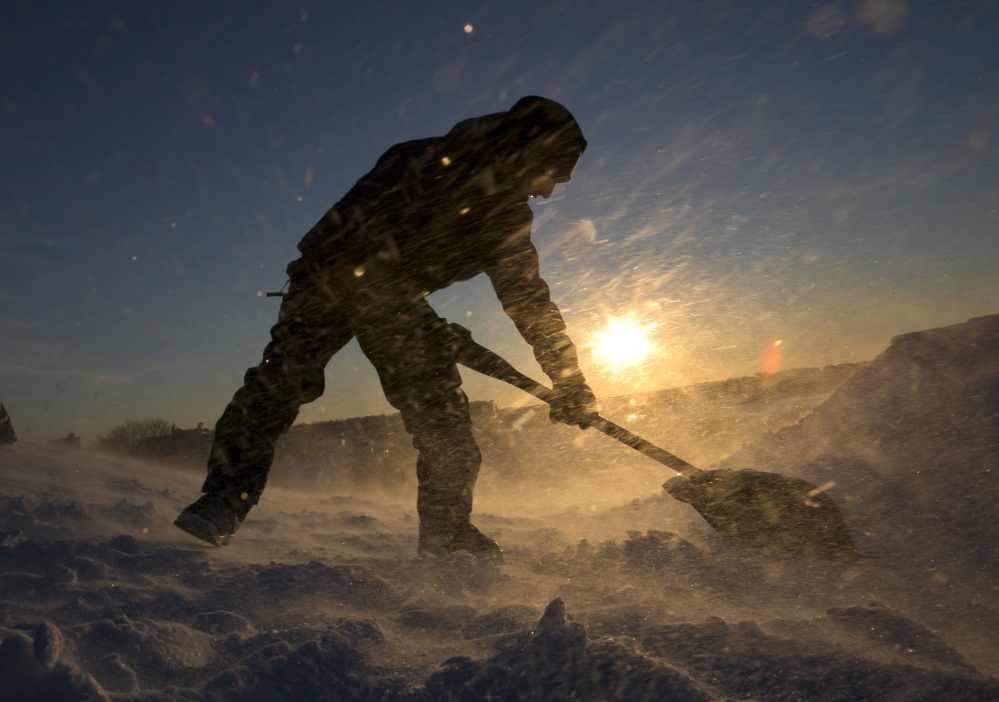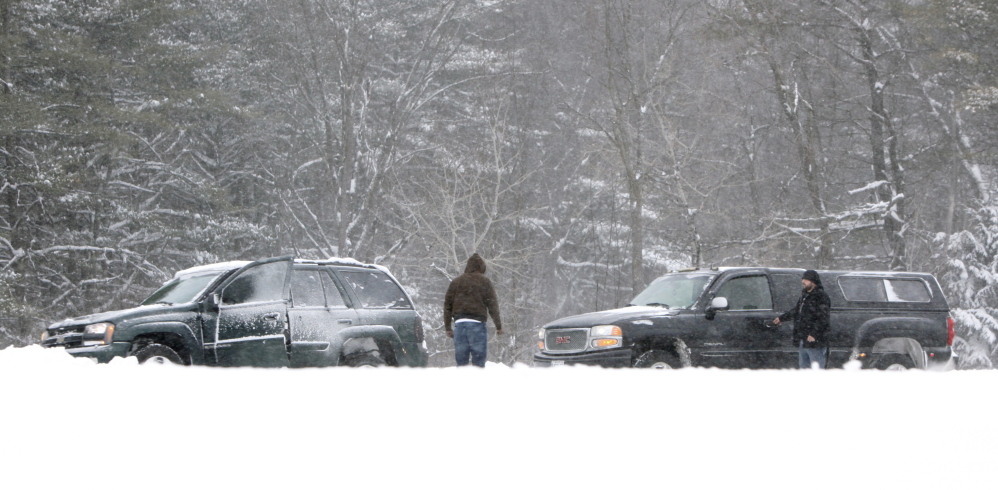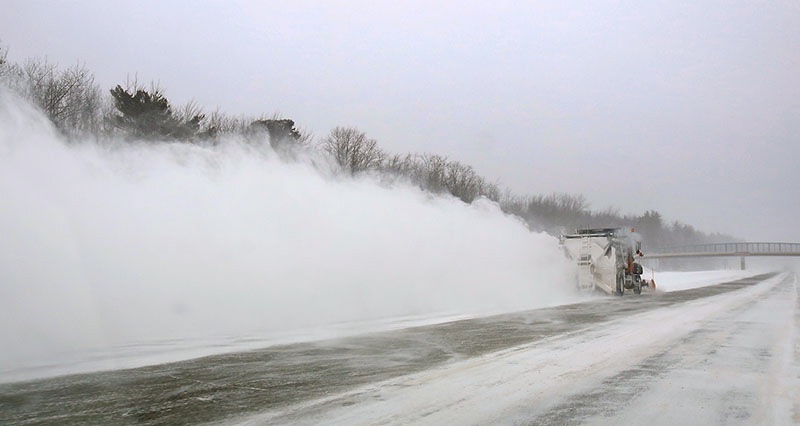When the temperature dips below zero and snow piles up over the lid of the trash barrel, most of us know exactly what to do.
Or at least we think we do, based on long experience.
We fill buckets with water so we can flush toilets that won’t work if the power goes out (again) and stoke the wood stove.
If we must go out, we pull on our warmest coat and boots to fight the bite, toss several bags of sand in the trunk for better traction on slick roads and let the engine warm up.
These rituals of staving off the cold are such deeply embedded habits, they’re practically genetic. But some of them, it turns out, reflect little more than urban legend, or old wives’ tales.
The best advice might be to make sure to separate fact from fiction. Here are some common beliefs about functioning in the cold, and the truth as experts see it:
• The most important part of the body to keep warm is the torso.
Fact: The trunk of the body must be protected so that it can retain heat to maintain circulation to the extremities. The parts of the body that lose heat quickest when exposed are, first the head, then fingers, hands, toes, feet, groin and armpits.
• Before driving, turn on the ignition and let the car run to warm the engine and ensure the best performance and gas mileage.
Fiction: Starting the car and letting it run before setting out is just a waste of gas, since it takes you nowhere, automotive experts say.
It does help to warm the engine block, but that’s better done by an electrical engine block heater that can be started one to five hours before you drive.
• Once you have snow tires on your car, you don’t have to worry about how the cold might affect your tires.
Fiction: Snow tires are best to enhance safety, but only if they’re in good shape, said John Cary, manager of Paulin’s Tire and Auto Care in Portland. Many tire dealers say the depth of the tread is the key, whether you’re driving on all-season tires or snow tires.
Cary suggests the “penny trick” to determine whether your tires are worn. Take a penny and put Abraham Lincoln’s head into one of the grooves of the tread. If part of his head is covered by the tread, you’re probably OK. If you can see all of his head, it’s time to replace the tire. When the tread is worn down to one-sixteenth of an inch, the tire must be replaced.
• With a four-wheel-drive vehicle, you’ll have no trouble on snow, but in a car with front- or rear-wheel drive only, you’ll need to add weight on the lighter end to prevent sliding, swerving or fishtailing.
Fiction: Equalizing the weight distribution with a couple of concrete blocks or bags of sand isn’t as crucial as making sure your tires are properly inflated.
Know what pressure your tires require and check it, Cary said. Remember that tires tend to lose pressure in cold weather.
At 32 degrees, you might have tire pressure of 35 pounds, but in bitter cold, that same tire might have only 28 pounds of pressure, Cary said.
For every 10-degree change in air temperature, your tire’s inflation pressure will change by about 1 pound per square inch – down with lower temperatures, up with warmer, according to the car industry specialists at tirerack.com.
In most parts of North America, the difference between average summer and winter temperatures is about 50 degrees, which means a potential loss of about five pounds per square inch as winter set in – enough to sacrifice handling, traction and durability, they say.
• If you’ve checked your front and rear tires for wear and pressure, you’re good to go.
False: Don’t forget your spare tire. The last thing you want in the dead of winter is a flat tire, with only another flat to back it up.
• Protect your gas line from freezing by adding a can of dry gas when you fill the tank.
Once fact, now fiction – at least in Maine, and at least for now.
That advice was based on the idea that condensation that forms in the gas tank calls for dry gas – usually ethanol or alcohol – to keep it from freezing so it can be burned.
Now, nearly all of Maine’s gas stations sell a blend with 10 percent ethanol, so the $2 to $5 you might spend on that dry gas can now go to Starbucks to keep your nervous system running instead.
But don’t count on that forever. Enough Mainers have expressed concern about the potential for engine damage with higher-ethanol blends that the percentages and types of ethanol in the state’s gasoline blends could change, pushing the mix below 10 percent ethanol – the preferred percentage for cold-weather gas burning.
• As temperatures dip, flying a plane is more dangerous.
Part fiction, part fact: “It is not cold temperatures per se,” said Katie Pribyl, vice president of communications for the Pilot Information Center of the Aircraft Owners and Pilots Association in Frederick, Md. “But there are other factors to consider.”
“Air is more stable in winter; it’s cold and heavy,” she said. “Many airplanes perform better in colder weather” because they’re easier to maneuver in those conditions than in the summer, when ground temperatures heat up and air rises, causing more turbulence.
The caveat, of course, comes with winter storms and ice. They can come up quickly, carrying high winds, frigid moisture and low visibility.
• In a plane, ground conditions matter less than what’s going on in the sky.
False: The tricky conditions that motorists deal with can be deadly for pilots.
Slush is particularly troublesome, pilots report, because a plane may cover a considerable amount of ground on takeoff before it becomes clear that slush is preventing acceleration. That can keep a plane on the ground.
North Cairn can be contacted at 274-0792 or at:
Send questions/comments to the editors.





Comments are no longer available on this story